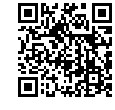QR Tags: You Want Them. You Just Don’t Know It Yet.
 As a modern marketer, I have been aware of and following QR codes for a couple of years – I was interested when Esquire did an entire issue earlier this year featuring QR codes – one feature with 30 “must have” items for every man included QR codes that would take you to styling tips for that item and where to buy them. Interesting, but not particularly compelling to me – a woman who has given up on styling her husband. QR codes popped up occasionally on movie posters, in hipster magazines and in handful of other pubs. I read articles about their functionality and their failures and occasionally pondered for which of my clients QR codes might work. But that was as far as it went. Until pennant fever overwhelmed me.
As a modern marketer, I have been aware of and following QR codes for a couple of years – I was interested when Esquire did an entire issue earlier this year featuring QR codes – one feature with 30 “must have” items for every man included QR codes that would take you to styling tips for that item and where to buy them. Interesting, but not particularly compelling to me – a woman who has given up on styling her husband. QR codes popped up occasionally on movie posters, in hipster magazines and in handful of other pubs. I read articles about their functionality and their failures and occasionally pondered for which of my clients QR codes might work. But that was as far as it went. Until pennant fever overwhelmed me.
On October 30th, the front page of the San Francisco Chronicle featured a QR tag for the ubiquitous orange Giants rally towel — a virtual towel embedded in a video. In one quick scan of the code, thanks to a free QR app I downloaded in seconds on to my iPhone, I was waving my virtual rally towel in my kitchen, ready for that night’s game. As I sat there in my Giants sweatshirt, a black SF painted on my face, I finally saw the light.
I was not alone in this epiphany – suddenly all my neighbors were talking about QR codes, thanks to the rally towel download. People who had barely understood how to text on their smartphones had downloaded virtual rally rags, showing it to friends at the farmer’s market and talking about their adoption of “cutting edge” technology. At the Giants’ homecoming parade, tens of thousands of people waved their phones with their virtual rally towels as the ticker tape rained down. And like that, suddenly it seemed that QR codes had moved beyond a concept to a much-needed tool that we all had to have to not only show our support for the greatest baseball team in the world, but to make smart buying decisions post-Series…and QR codes were popping up everywhere.
In Sunday’s 30-page toy circular (the “buy this for me, mama” catalog), Target took advantage of Fisher Prices’ new QR codes to tout merchandise whose value was not immediately seen. With a quick scan of a QR code, videos launched to either explain the toy’s functionality or to highlight long-form commercials with kids as the clear target. My children began scouring the book for more codes, eager to be marketed to via my iPhone.
Later that day we visited Best Buy, where QR codes on each product tag allowed me to read consumer reviews, compare features and email the information to my husband to see if he could talk me out of it before I reached the check out line. For many consumers who have been hesitant to buy in brick-and-mortar without access to third-party reviews that might save them from a poor buying decision, this type of immediate information could change up the game and move an online buyer in to one that actually enters the real world to shop. And real-world shopping often leads to higher volume shops, thanks to accessory upsells and impulse buys – a definite upside for retailers.
The downside for retailers? As Best Buy has learned, it takes a lot of man hours and printing to keep up with the latest info on any given product – in fact, the date and time that the tag was printed is shown on each, to assure shoppers they have the latest and greatest. According to a recent article on RetailGeek.com, these tags are reprinted twice a month, meaning Best Buy is printing over a half BILLION tags each year across all stores, as well as paying for employees to install them. That’s approximately $312 million dollars in labor, printing not included. It would seem that the next natural step in in-store QR code adoption will be digital tags, a one-time investment that can allow for faster, cheaper and more frequent updating of tags across all locations.
QR codes are here to stay, and their availability and quality of information can only get better. As move into the holiday shopping, with the “new” Black Friday already behind us, look for QR tags to appear in circulars, magazines and catalogs, and perhaps even in a retailer near you. You’ll feel more confident in your buying decisions, knowing that you have the real facts and perhaps even consumer reviews, and won’t end giving this year’s pet rock. And marketers are sure to see the value in this investment, as shoppers overcome any fear they have of buying off-the-page or off-the-shelf, driving them to perhaps buy more — and more often.




